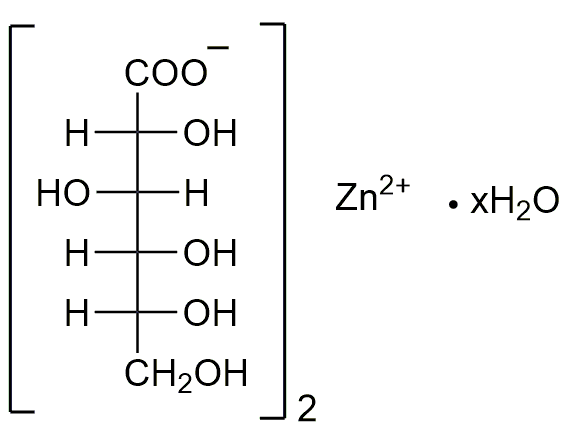Zinc gluconate is widely utilized in research focused on:
- Dietary Supplements: Commonly used as a zinc source in dietary supplements, it supports immune function and overall health, making it popular among health-conscious consumers.
- Pharmaceuticals: Employed in various formulations, it enhances the bioavailability of zinc, which is crucial for treating zinc deficiency and related health issues.
- Cosmetics: Incorporated in skincare products for its soothing properties, it helps in reducing skin irritation and promoting a healthy complexion.
- Food Fortification: Used to fortify food products, it provides an essential mineral that supports growth and development, especially in populations at risk of deficiency.
- Research Applications: Utilized in laboratory studies to investigate the role of zinc in biological systems, aiding researchers in understanding its impact on cellular functions and disease mechanisms.
General Information
Properties
Safety and Regulations
Applications
Zinc gluconate is widely utilized in research focused on:
- Dietary Supplements: Commonly used as a zinc source in dietary supplements, it supports immune function and overall health, making it popular among health-conscious consumers.
- Pharmaceuticals: Employed in various formulations, it enhances the bioavailability of zinc, which is crucial for treating zinc deficiency and related health issues.
- Cosmetics: Incorporated in skincare products for its soothing properties, it helps in reducing skin irritation and promoting a healthy complexion.
- Food Fortification: Used to fortify food products, it provides an essential mineral that supports growth and development, especially in populations at risk of deficiency.
- Research Applications: Utilized in laboratory studies to investigate the role of zinc in biological systems, aiding researchers in understanding its impact on cellular functions and disease mechanisms.
Documents
Safety Data Sheets (SDS)
The SDS provides comprehensive safety information on handling, storage, and disposal of the product.
Product Specification (PS)
The PS provides a comprehensive breakdown of the product’s properties, including chemical composition, physical state, purity, and storage requirements. It also details acceptable quality ranges and the product's intended applications.
Certificates of Analysis (COA)
Search for Certificates of Analysis (COA) by entering the products Lot Number. Lot and Batch Numbers can be found on a product’s label following the words ‘Lot’ or ‘Batch’.
Numéro de catalogue
Numéro de lot/série
Certificates Of Origin (COO)
This COO confirms the country where the product was manufactured, and also details the materials and components used in it and whether it is derived from natural, synthetic, or other specific sources. This certificate may be required for customs, trade, and regulatory compliance.
Numéro de catalogue
Numéro de lot/série
Safety Data Sheets (SDS)
The SDS provides comprehensive safety information on handling, storage, and disposal of the product.
DownloadProduct Specification (PS)
The PS provides a comprehensive breakdown of the product’s properties, including chemical composition, physical state, purity, and storage requirements. It also details acceptable quality ranges and the product's intended applications.
DownloadCertificates of Analysis (COA)
Search for Certificates of Analysis (COA) by entering the products Lot Number. Lot and Batch Numbers can be found on a product’s label following the words ‘Lot’ or ‘Batch’.
Numéro de catalogue
Numéro de lot/série
Certificates Of Origin (COO)
This COO confirms the country where the product was manufactured, and also details the materials and components used in it and whether it is derived from natural, synthetic, or other specific sources. This certificate may be required for customs, trade, and regulatory compliance.


